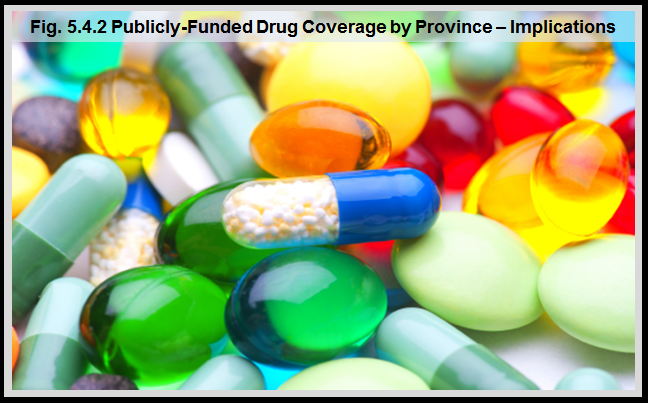Publicly-Funded Drug Coverage by Province – Findings and Implications

1 Huskamp HA, Deverka PA, Epstein AM, et al. Impact of 3-tier formularies on drug treatment of attention-deficit/hyperactivity disorder in children. Arch Gen Psychiatry. 2005;62(4):435-441
2Ungar WJ, Paterson JM, Gomes T, Bikangaga P, Gold M, To T, Kozyrskyj AL. Relationship of asthma management, socioeconomic status, and medication insurance characteristics to exacerbation frequency in children with asthma. Annals of Allergy, Asthma & Immunology, 106:17–23, 2011.
3Kozyrskyj AL, Mustard CA, Cheang MS, Simons F. Income-based drug benefit policy: impact on receipt of inhaled corticosteroid prescriptions by Manitoba children with asthma. CMAJ, 2008.165(7)
4Ungar WJ, Kozyrskyj A, Paterson M, Ahmad F. Effect of cost-sharing on use of asthma medication in children. Arch Pediatr Adolesc Med. 2008 Feb;162(2):104-10
5Benchimol E, Guttmann A, To T, Rabeneck L, Griffiths AM. Changes to surgical and hospitalization rates of pediatric inflammatory bowel disease in Ontario, Canada (1994-2007). Inflamm Bowel Dis. 2011 Oct;17(10):2153-61.
Although each province/territory has a public drug plan, there is wide variation regarding what is covered. Regardless of the plan, out-of-pocket costs (due to co-payments or deductibles) are almost always required. There is strong evidence that financial barriers such as these discourage the use of prescription medications and may result in poor health for children.1-5 Recently, policy researchers have recommended a national pharmaceutical plan to promote cost savings and to reduce inequities in access.6
